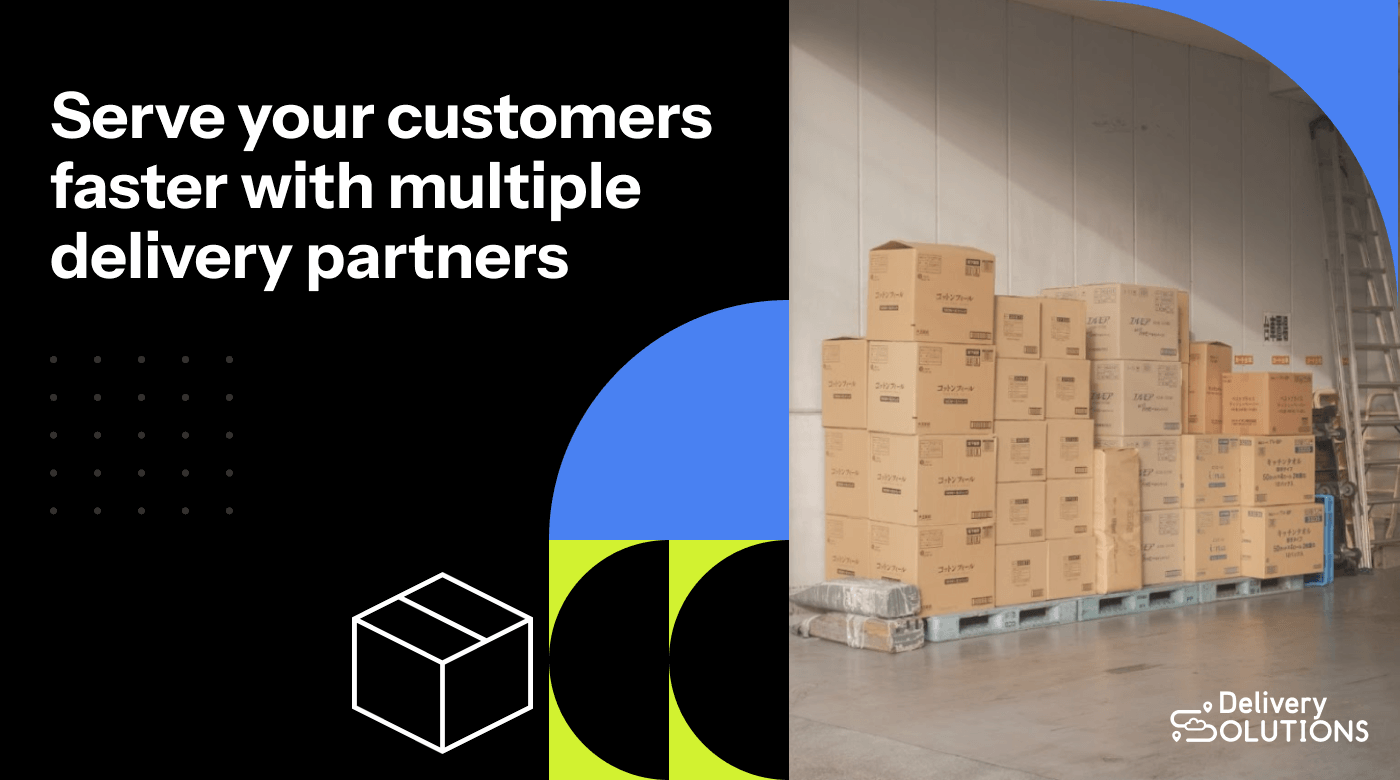E-commerce is not just about online transactions; it's about creating an integrated shopping experience that extends from product discovery to the final delivery at the customer's doorstep.
Delivery services play one of the only roles with human interaction for online orders.
They bridge online purchases and physical fulfillment, turning virtual shopping carts into real-world customer satisfaction.
Delivery Service Provider (DSP) diversification refers to using multiple carriers and delivery methods to fulfill e-commerce orders.
Diversification helps businesses seize opportunities to provide higher service quality, expand market reach, and optimize costs.
In this article, we’re taking a deeper look at DSP diversification and why it's the best choice for any e-commerce business.
How the rise of e-commerce has changed the delivery game
The popularity of e-commerce among consumers drives innovation in the industry. As more people choose to shop online (including internationally), a more complex and customer-centric approach to delivery is necessary.
Historically, retail deliveries primarily focused on business-to-business (B2B) transactions, with customers responsible for the final leg of the journey. Alternatively, delivery was arranged in-store using an in-house system.
Some mail-order businesses, like Columbia House, used traditional postal services. But for most consumers, shopping took place in brick-and-mortar stores with less emphasis on delivery than today’s shoppers.
Since the shift to e-commerce — driven by brands like Amazon — innovations such as same- and next-day delivery, parcel tracking, and localized distribution centers have become commonplace. These advancements reflect a broader trend toward a delivery ecosystem built around modern customers.

Much of the innovation revolves around the “last-mile delivery” — the final part of the journey from the local distribution center to the customer. The last mile has a significant economic impact and was estimated in 2021 to be worth $91.7 billion in the business-to-consumer (B2C) segment alone.
The transformation in the delivery industry is not just about scale but also about the quality of service. The shift from an estimated delivery time of 7-8 working days to same-day delivery in some cases represents a significant evolution in service standards.
Customers now have more options to manage their delivery by redirecting parcels, changing the delivery date, changing the delivery address, or nominating a safe place. This leads to fewer delivery failures by acknowledging the busy lifestyles of modern consumers.
Challenges faced by businesses relying on a limited number of DSPs
Businesses have many choices when partnering with a delivery service provider (DSP). However, relying on only a limited number of DSPs can cause issues impacting their efficiency and customer satisfaction. If you only partner with a single provider, there's a higher risk of capacity limitations preventing swift deliveries.
Without multiple partners, scaling up during peak seasons or promotional periods where extra capacity is needed may be difficult. Diversifying with multiple DSPs means delivery timeframes are less likely to be affected when it's busy.
There may also be problems with geographical coverage when dealing with a limited number of DSPs. Their network may not be wide-reaching, which can restrict a business's market reach and cut them off from less accessible areas.
Vulnerability to service disruptions is also an increased risk. Relying on one or a small number of DSPs means any operational issues they face will directly impact the ability of your business to deliver goods on time. Unpredictability can be off-putting for consumers who won't hesitate to leave a negative review following a bad delivery experience.
What diversifying DSPs delivers for your business
Diversifying DSPs unlocks many advantages for savvy businesses essential to e-commerce and global trade. By expanding their network of DSPs, businesses enjoy greater operational efficiency, customer satisfaction, and market reach.
Online shopping opens businesses up to the entire international trade. Gone are the days of only being able to sell goods in a single town or area; now, any business can reach consumers worldwide. Selling internationally is more complex than domestic trade, but partnering with multiple DSPs can ease the burden of customs regulations and regional delivery standards.
Customers worldwide may have their preferences regarding who delivers their packages. Offering customers a choice of multiple DSPs empowers them with more control over who handles their delivery. Previous bad experiences with a delivery service are enough to deter customers from completing a purchase. By offering plenty of alternatives, customers can choose the DSP that has a good reputation in their area.
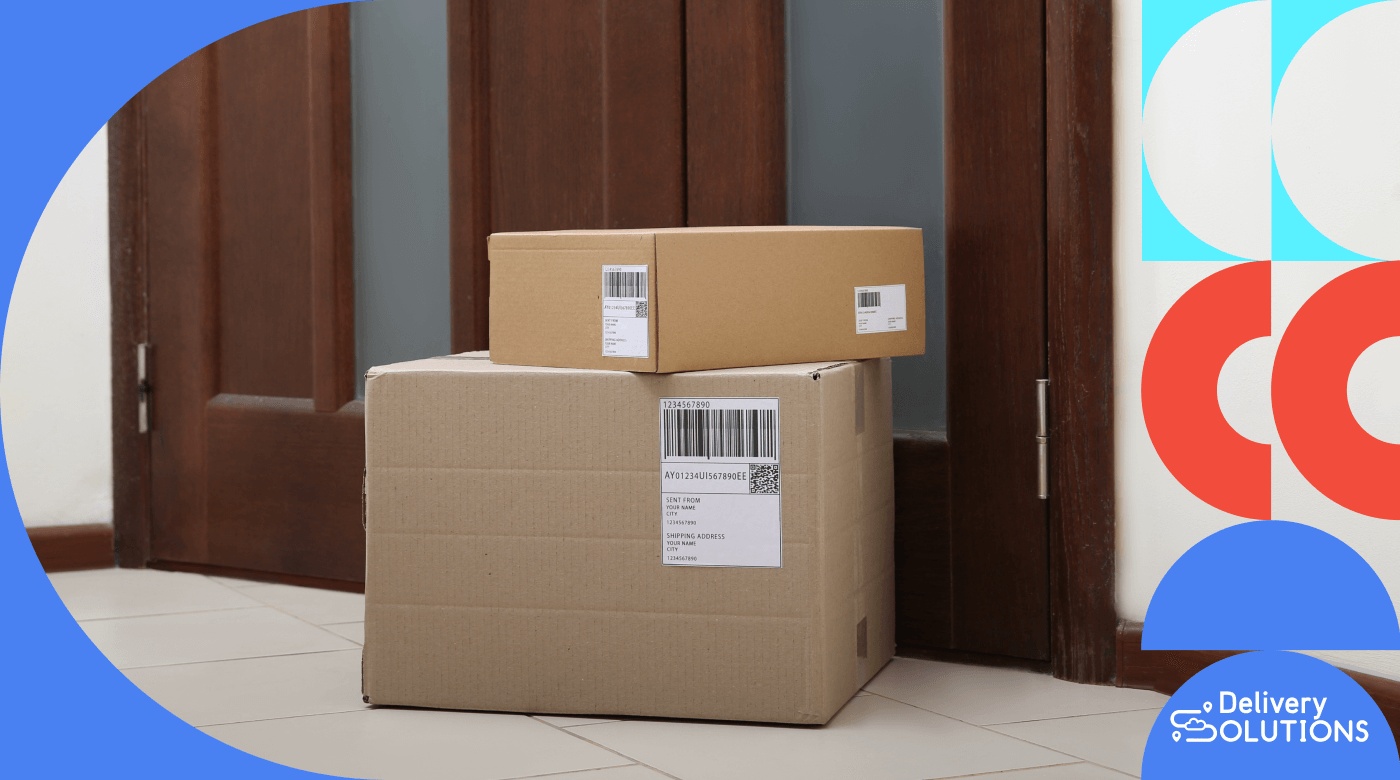
The courier and local delivery services industry in the United States is growing, with a 1.2% increase in 2023 compared to 2022. This growth indicates a robust and expanding market, emphasizing the importance of diversifying DSPs to capitalize on emerging opportunities and trends in the delivery and logistics industry.
Businesses need to keep pace with changing customer expectations for the delivery industry. Customers expect fast and reliable delivery options and know which delivery companies are investing in technology and infrastructure. By partnering with technologically advanced suppliers, businesses can future-proof themselves to stay ahead of their competitors.
Diversification in DSPs creates a competitive environment, allowing businesses to negotiate better rates and terms, ultimately reducing shipping costs and improving profit margins. If your company were to stick with a single delivery provider, you might find yourself limited in negotiating power and flexibility.
Consumer expectations at checkout
At the checkout stage, consumer expectations have evolved significantly as e-commerce has grown. Advancements in delivery options driven by Amazon and other online powerhouses have given consumers more power over their deliveries.
With rising customer expectations, businesses may which to offer:
- Same-day or Next-day Delivery: Consumers increasingly seek immediate or very prompt delivery services, especially for essential or urgent items. The convenience of receiving products quickly is a significant factor in the purchasing decision.
- Time-Slot-Specific Delivery: Customers appreciate the ability to choose specific time slots for their deliveries, ensuring they are available to receive their orders. This option adds a layer of convenience and personalization to the delivery process.
- Environmentally Friendly Options: With growing awareness of environmental issues, many consumers prefer eco-friendly delivery options. This includes reduced packaging, carbon-neutral delivery methods, and electric or hybrid delivery vehicles.
- Pick-up Locations: Offering the option to pick up orders at designated locations, such as storage lockers, provides flexibility for customers who may not be available for home delivery. This method can also expedite the delivery process.
- Curbside Delivery: Particularly popularized during the COVID-19 pandemic, curbside delivery offers a contactless and convenient option for customers to receive their orders without leaving their vehicles.
- Depot Collection: Some consumers prefer collecting their parcels from a local depot at their convenience, especially for high-value or sensitive items that require additional security.
Businesses shouldn’t underestimate the importance of offering robust delivery options. A study reported that 85% of Europeans would let a bad delivery experience prevent them from making a repeat purchase. If a customer chooses to leave a review about a bad delivery experience, it may lead to a tarnished reputation for both the delivery service and your business.
Benefits of DSP diversification for your business
Diversifying your delivery service providers unlocks many key benefits for your business. Not only does it offer more flexibility and freedom to your customers, but it can directly affect brand trust and loyalty. Here are some of the benefits of DSP diversification:
Reach and reliability
By diversifying DSPs, businesses can expand their reach geographically and demographically, unlocking more revenue opportunities. This expansion allows companies to penetrate new markets and cater to a broader customer base. Multiple DSPs also boosts reliability, reducing dependency on a single provider and mitigating risks associated with service disruptions or capacity limitations.
Efficient delivery
Multiple DSPs enable better optimization of delivery routes and times. Different providers may offer varied strengths, such as faster urban deliveries or more efficient rural service. Leveraging these strengths can lead to more efficient delivery processes, reducing transit times and costs.
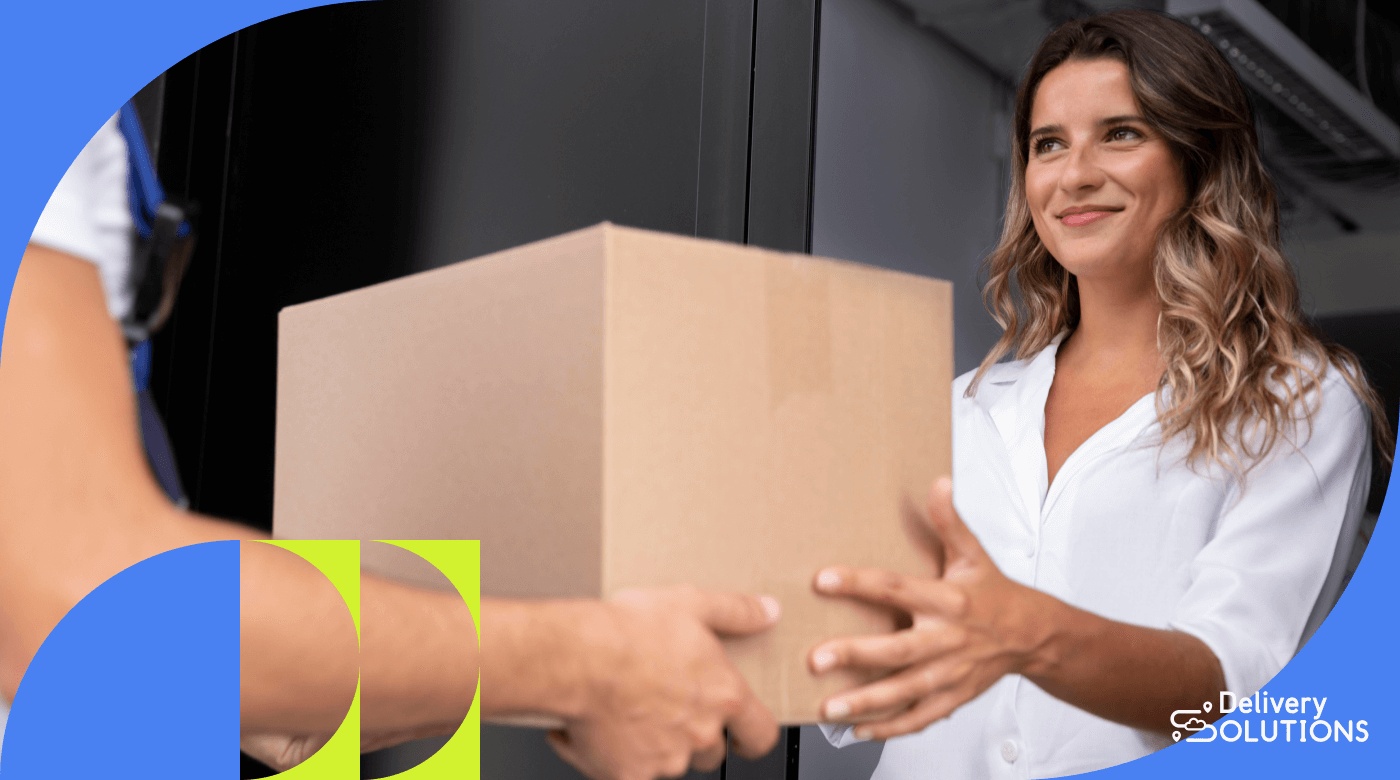
Consider e-commerce heavyweight Amazon and how they’ve redefined efficient delivery. Amazon is nearly twice as fast as its competitors, with an average delivery time of two days. This efficiency sets a high standard for delivery speed and reliability, emphasizing the need for businesses to optimize their delivery strategies to remain competitive.
Flexibility
Diversification allows businesses to offer more delivery options to suit different customer needs. This flexibility can include varied delivery speeds, costs, and methods, catering to a wide range of customer preferences and making the overall customer experience better for everyone.
Scalability
Businesses can scale up and down more fluidly depending on demand fluctuations. During peak periods, having a range of providers ensures the business can handle increased volumes without compromising delivery times or service quality.
Negotiation
Engaging with multiple DSPs provides businesses with leverage to negotiate better prices and terms. This competitive environment can lead to cost savings and more favorable agreements, directly impacting the bottom line.
Modern delivery technology
Features like real-time tracking, push notifications and alerts, and the option to update delivery information in transit can positively affect the customer experience. This technological edge can be a significant differentiator in a competitive market.
Key features include:
- Real-Time Tracking: Offers customers transparency by allowing them to see their package's location, reducing anxiety about delivery times.
- Push Notifications: Keeps customers informed about their delivery status, enhancing engagement without checking manually.
- Updating Delivery Information in Transit: Provides flexibility to change delivery details, adapting to customers' dynamic schedules and reducing missed deliveries.
- Integration with Customer Service: Enables customer service teams to access real-time delivery information, leading to efficient and informed support.
- Predictive Analytics: Improves delivery time estimates and optimizes routes, enhancing efficiency and reliability.
- Personalization: Remembers customer preferences for delivery, demonstrating a commitment to convenience and potentially increasing loyalty.
Diversifying DSPs is not just a logistical decision but a strategic move allowing businesses to reach a wider market, raise customer satisfaction rates, and act more competitively in a global marketplace.
Drawbacks of dealing with multiple delivery partners
Dealing with multiple delivery partners, while beneficial in many aspects, also presents certain drawbacks that businesses must consider. These challenges primarily revolve around control, complexity, and integration.
Less control over service quality
When working with a variety of Delivery Service Providers (DSPs), businesses face the challenge of maintaining consistent service quality. Each DSP has its own set of strengths and weaknesses, and uniformly high-quality service across all providers is not always guaranteed. This variability can lead to inconsistencies in customer experience, potentially affecting the business's reputation.
Partnering with Delivery Solutions can ease the pain of a bad delivery experience by self-healing issues without manual intervention. Deliveries can be rerouted if and when road works or bad weather affects the road, and our team of experts is on hand to handle any exceptions that may arise.
Increased complexity in logistics management
Managing multiple DSPs inherently makes logistics more complex. Each provider may operate with different systems, protocols, and standards. Coordinating between these diverse systems can be a logistical challenge, requiring more resources and effort. This complexity can lead to inefficiencies and increased chances of errors in the delivery process.
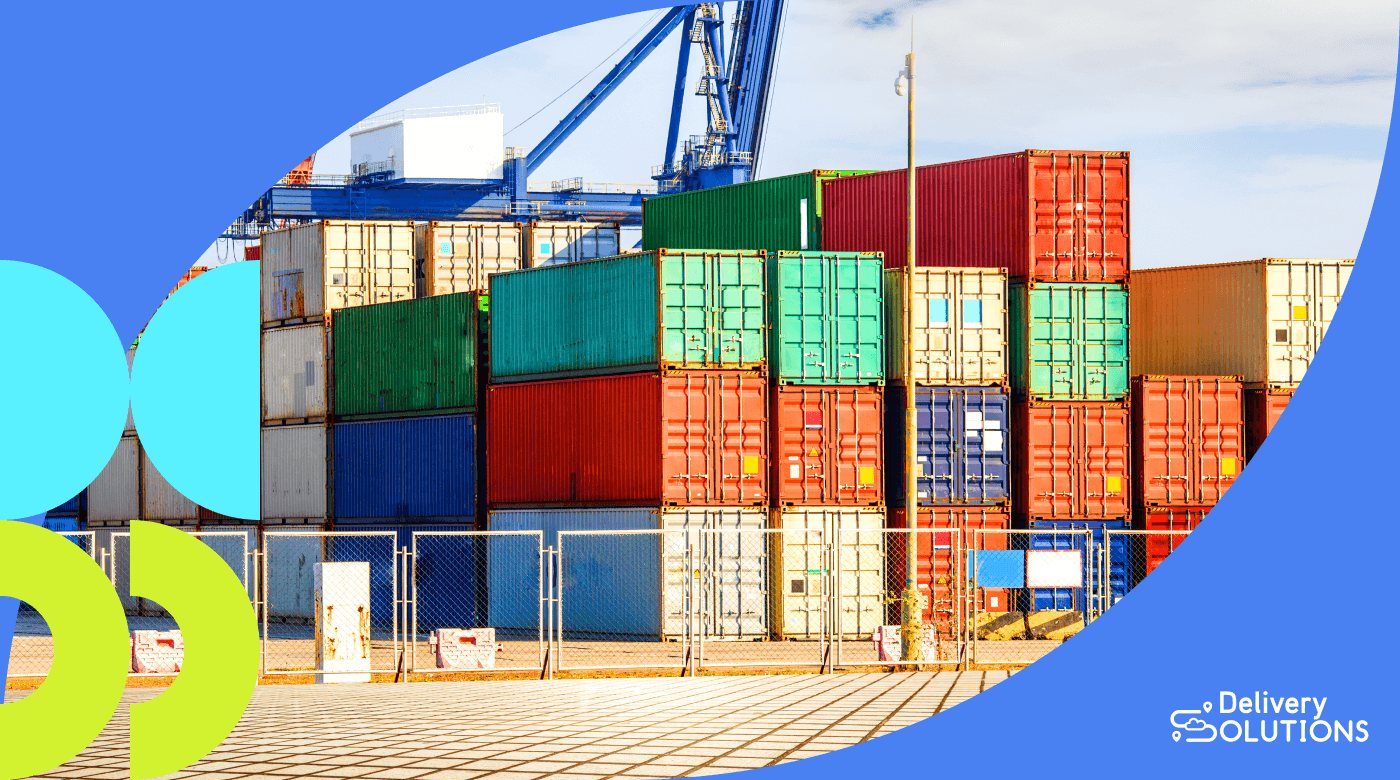
Delivery Solutions simplifies logistics management by providing a single contract across multiple DSPs. Gain access to a worldwide carrier network without the need for direct contracts.
Integration challenges
Integrating multiple DSPs into a business's IT infrastructure can be challenging. Each DSP might require different integration methods or have varying levels of technological advancement.
How to successfully manage DSP diversification
Successfully managing DSP (Delivery Service Provider) diversification requires a strategic approach, including selecting the right partners and effectively monitoring these partnerships. Here's how to navigate this process:
Choosing the right DSP
Since it’s a fast-growing industry, there are plenty of delivery service providers to choose from, but how do you find the best options for your business and the customers you serve?
Consider the following:
- Geographical coverage: Assess the geographical reach of each DSP, including their capability for international deliveries. This is particularly important for businesses looking to expand their market or already serving a global customer base.
- Service offerings: Evaluate the variety of services offered, such as same-day, next-day, two-day delivery, and pickup options. The diversity in service offerings can cater to a broader range of customer preferences and needs.
- Cost options: Consider the pricing structure of each DSP. This includes volume discounts, surcharges, and the overall balance between cost and quality of service. A cost-effective yet high-quality service is ideal.
- API integration: Ensure the DSP's technology seamlessly integrates with your business's existing systems. Efficient API integration simplifies logistics management and enhances operational efficiency. For example, partnering with Delivery Solutions means there’s only one initial API integration, so you’ll be up and running quickly.
- Reliability and review history: Research each DSP's reliability and customer feedback. A consistent track record of reliability and positive reviews can significantly indicate service quality.
- Scalability: Assess how well the DSP can scale with your business operations, especially during peak seasons or periods of rapid growth.
- Sustainability options: In an era where environmental impact is a growing concern, consider DSPs that offer sustainable delivery options.
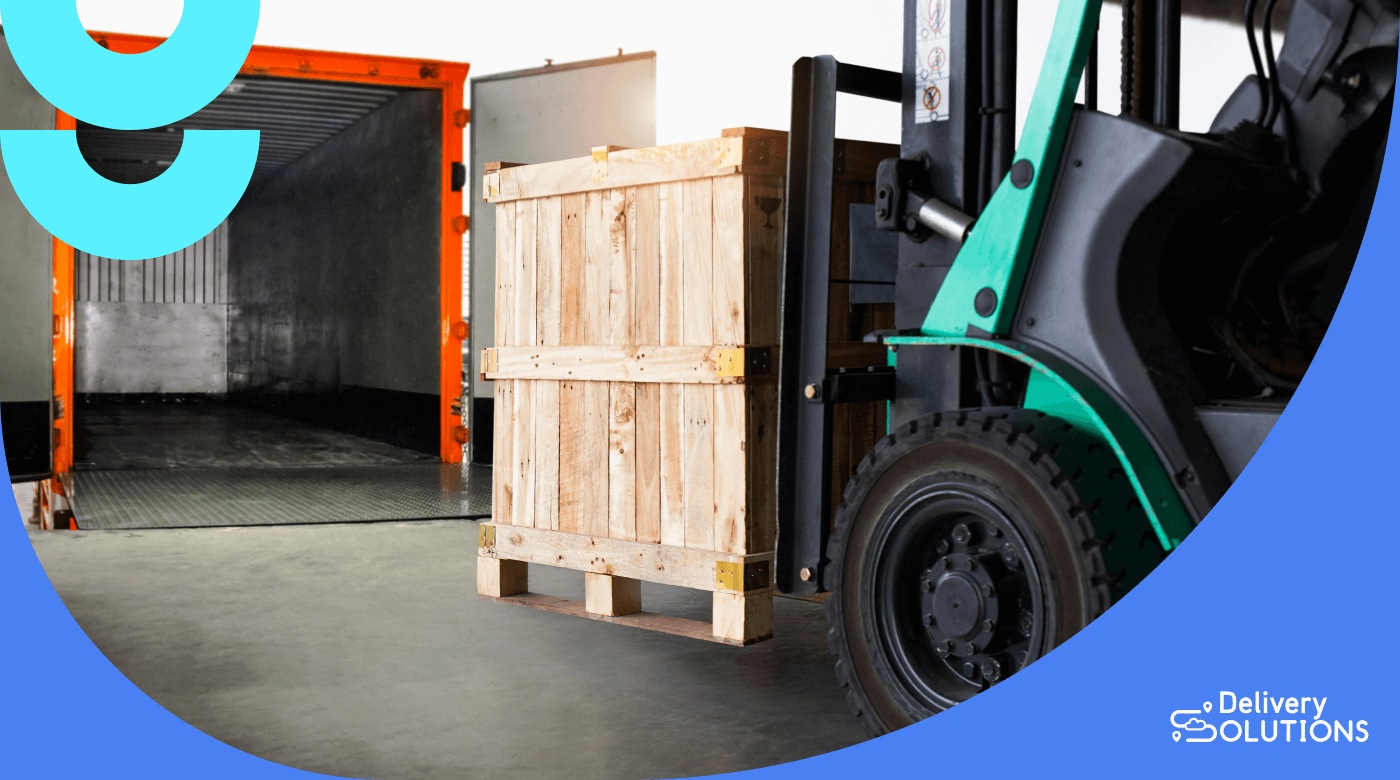
Finding the right balance between cost-effectiveness and service quality is vital for all online businesses. Choose an expensive DSP, and you may end up pricing yourself out of sales to cover the costs. However, choosing the cheapest provider may lead to poorer service quality, tarnishing your brand's reputation.
Monitoring DSP partnerships
Following the onboarding of any new partner, it’s vitally important to monitor the quality of service. Your brand name is attached to the DSPs service, and if they’re failing to meet business or customer standards, this can lead to a negative reputation.
Here’s how to monitor delivery partnerships:
- Performance reviews: Regularly review the performance of each DSP. This includes assessing customer satisfaction with the delivery experience and addressing recurring issues.
- Clear lines of communication: Establish and maintain open and effective communication channels with your DSPs. This ensures any issues are promptly addressed and fosters a strong partnership.
- Contract flexibility: Ensure that the DSPs can adapt to fluctuations in your business, such as seasonal changes or unexpected demand spikes.
- Continuous training for staff: Organize regular training for logistics and delivery management staff. This helps them stay updated on best practices and effectively manage multiple DSPs.
If a delivery partner isn’t meeting standards, it may be worth considering moving on and partnering with someone else. However, if customer reviews are good and the issues are minor or infrequent, working with the DSP may be more beneficial to resolve these challenges.
Technology’s role in managing DSPs
Use technology to your advantage when working with delivery service providers. Technology can streamline many areas of logistics.
![]()
Here are some of the ways modern technology can help you out:
- Integrating delivery platforms in the backend: Use an omnichannel platform like Delivery Solutions to unite all DSPs in a unified system.
- Automated systems for delivery and returns: Utilize automated systems to handle delivery scheduling, routing, and returns. This reduces manual intervention and increases efficiency.
- Tracking and analytics in real-time: Implement real-time tracking and analytics to monitor deliveries. This provides valuable insights into delivery performance and customer satisfaction.
- Automatic feedback loops: Establish automatic feedback loops to gather customer feedback on delivery experiences. This information can be used to improve service quality continuously.
Successfully managing DSP diversification involves a careful selection process, ongoing monitoring, and management. By addressing these key areas, businesses will improve their service quality and offer a customer-centric approach to delivery.
Case study: DSP diversification in action
Lowes Foods, a leader in online shopping convenience, faced challenges in scaling its online delivery order volume while maintaining a high-quality customer experience. Their partnership with Delivery Solutions provided a comprehensive solution to these challenges.
Unified technology infrastructure
Before the partnership, Lowes Foods managed each delivery provider individually, which was not scalable. Delivery Solutions provided a unified system that integrated third-party delivery solutions, orchestrating last-mile delivery for over 80 stores across North Carolina, South Carolina, and Georgia.
Enhanced user experience
Lowes Foods aimed to streamline its eCommerce service, Lowes Foods To Go, under a single, user-friendly, and on-brand platform. Delivery Solutions facilitated this by creating a consistent look and feel across the entire customer journey, ensuring that guests recognized Lowes Foods as the manager of their end-to-end experience.
Orchestration rules for improved UX
Through Delivery Solutions, Lowes Foods set up orchestration rules that automatically optimized preferred delivery providers for each store and region. This system improved operational efficiency and reduced costs, ensuring quick and efficient order fulfillment.
White labeling for consistent branding
DS provided a white-labeled, real-time tracking page for guests, maintaining Lowes Foods branding throughout delivery. This feature enabled customers to track their deliveries seamlessly, enhancing the overall customer experience.
Manage your DSPs with Delivery Solutions
Shipping has become one of the most important elements of shopping, and consumers expect a good service experience with the ability to control their delivery details. This includes preferences for delivery times, real-time tracking, and flexible options for receiving their orders.
Businesses that recognize and adapt to these expectations by offering superior shipping services and leveraging modern delivery technologies are more likely to build customer loyalty.
Book a demo with Delivery Solutions today to learn more about our unified omnichannel platform. With Delivery Solutions, you can handle all DSPs under a single system and impress your customers with a wider range of delivery options than your competitors.
Ryan Caldarone
Ryan is a Sr. Digital Marketing Manager with over ten years of experience in B2B eCommerce, specializing in brand storytelling and content. Having contributed to hundreds of creative projects for SMBs and startups across the tech, energy, and fine arts sectors, Ryan brings diverse perspectives.
Topics from this blog: Efficiency Ecommerce
